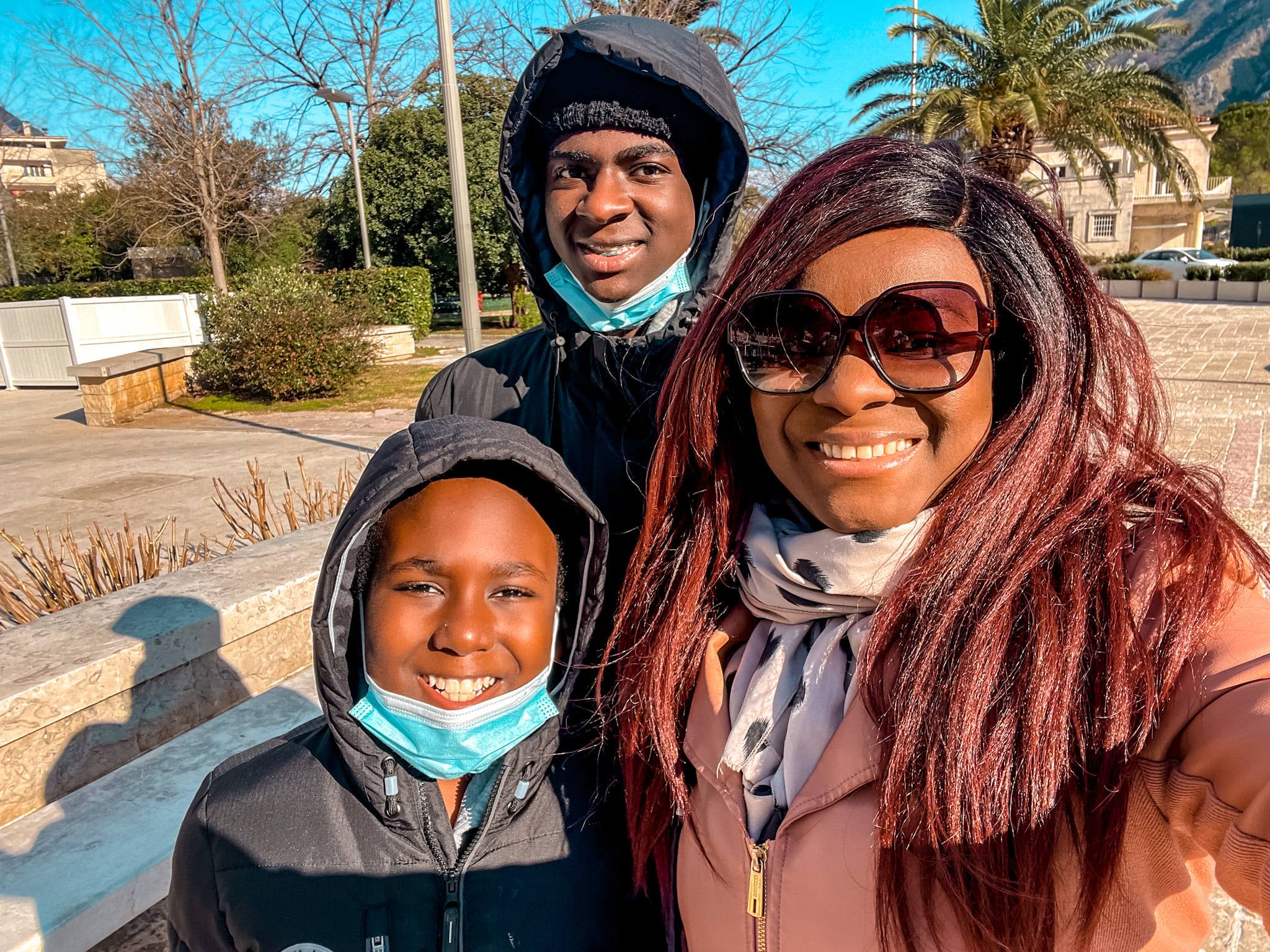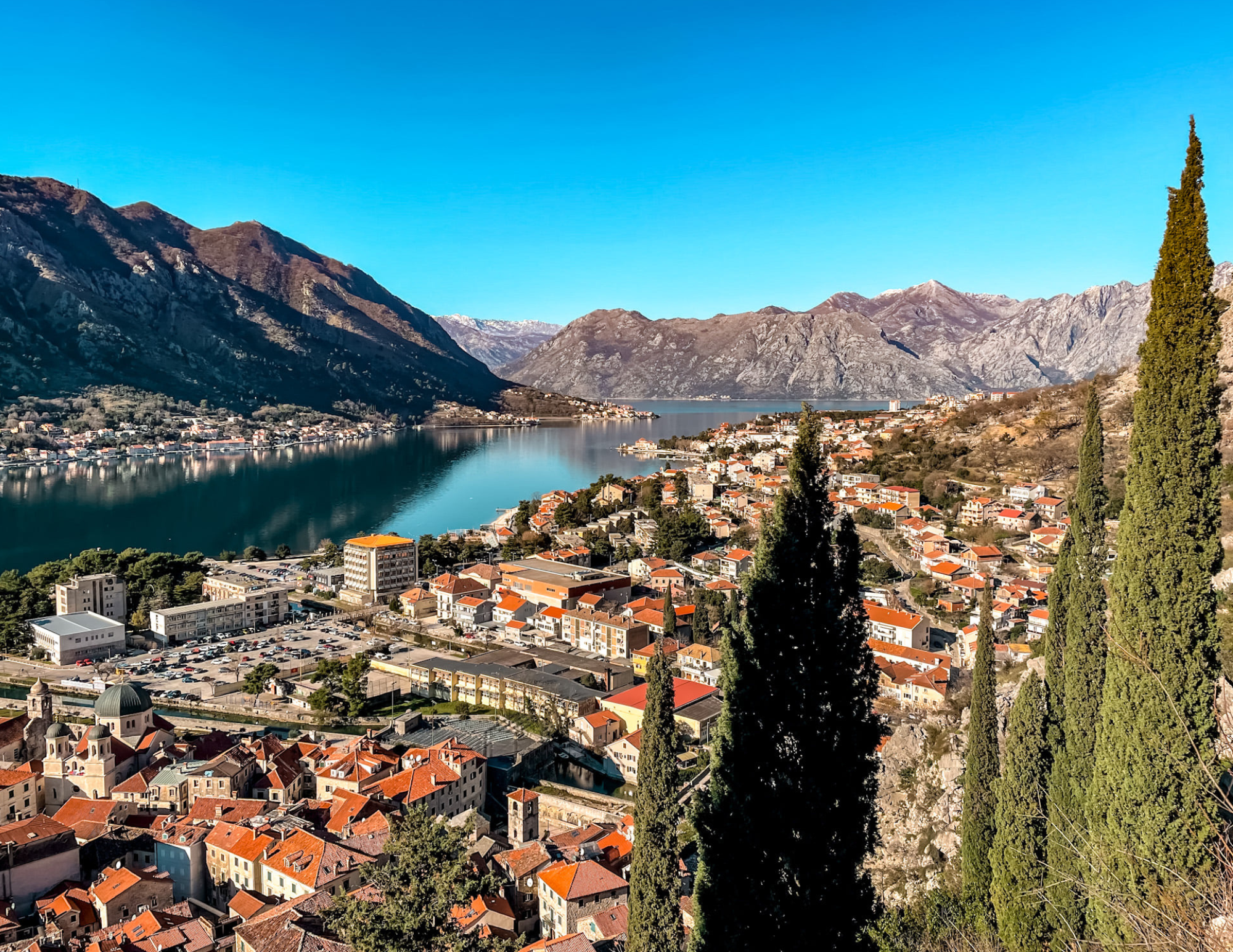Kotor, Montenegro. One of the most underrated cities in Europe. This is definitely a summer destination for those looking to head to the beach, out on the boat, and soak up the sun.
We visited during the winter and still had a fantastic time. It was just cold. The views. The views in this harbor city are breathtaking. Our Airbnb faced the mountains and water and made for a stunning way to wake up every morning.
Kotor is in a bay near the limestone cliffs of Mt. Lovćen, a fortified town on Montenegro’s Adriatic coast. Most of the city is walkable depending on where you stay. Most hotels and Airbnbs will be close to the Old Town, which makes exploring super easy.
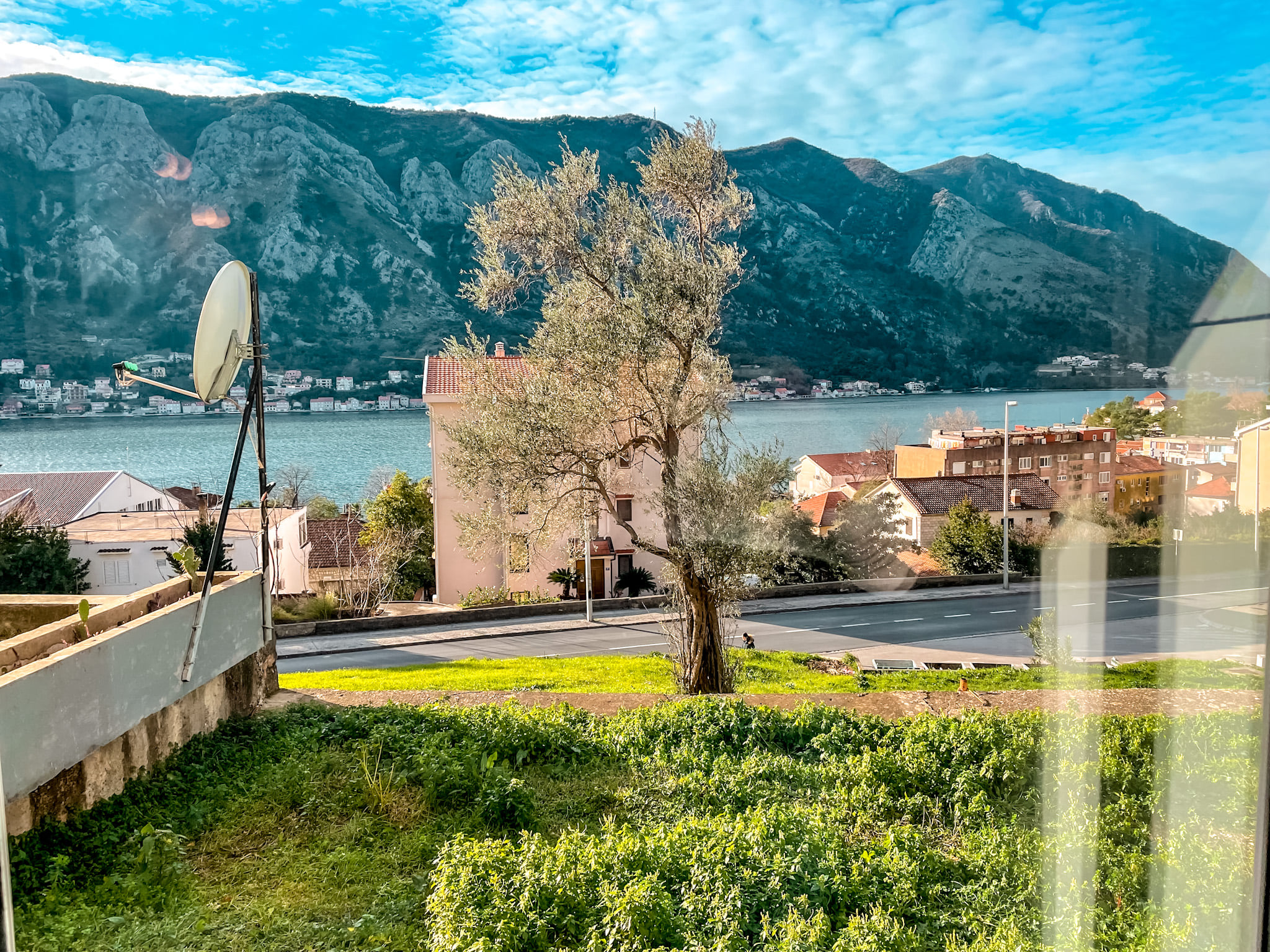
Where Is Kotor & Why It Feels Like a Fairytale
Kotor sits on the Bay of Kotor (Boka Kotorska), a dramatic, fjord-like bay carved into the Adriatic coast. The surrounding mountains rise steeply from the water and wrap around the town like a stone amphitheater. The entire Natural and Culturo-Historical Region of Kotor, including the old town, fortifications, and inner bay, is a UNESCO World Heritage Site thanks to its unique mix of medieval architecture and natural beauty.
It looks like something out of a fairytale. The winding cobblestone streets, historic, well-preserved buildings, vibrant cafe culture, churches, museums… all feel like something from medieval times. There is so much to do in Old Town. The winding streets can have you lost in no time, in the best way. So much to see and take in.
Historically, Kotor has been inhabited since antiquity and was controlled at various times by the Byzantines, the Serbs, and especially the Venetian Republic, which ruled from the 15th to 18th centuries and left a big mark on its architecture and fortifications.

When to Visit Kotor: Summer vs. Winter
We went in winter, it was cold and quiet, but still magical. If you’re deciding when to plan your Kotor trip:
- Summer (June–August): Hot, sunny, and busy. Perfect for boat trips, swimming, and long evenings on the waterfront. Expect cruise ships and higher prices.
- Shoulder seasons (April–May & September–October): The sweet spot. Warm enough for outdoor cafes and hikes, fewer crowds, generally better value.
- Winter (November–March): Much quieter, some tours and restaurants closed or on reduced hours, but Old Town is peaceful and atmospheric. This is the Kotor we experienced, empty hikes, no crowds on the walls, and cheaper accommodation.
If you’re after that buzzing, beachy energy, aim for late spring to early fall. If you want cozy, crowd-free medieval vibes, winter works just fine, with a warm coat.
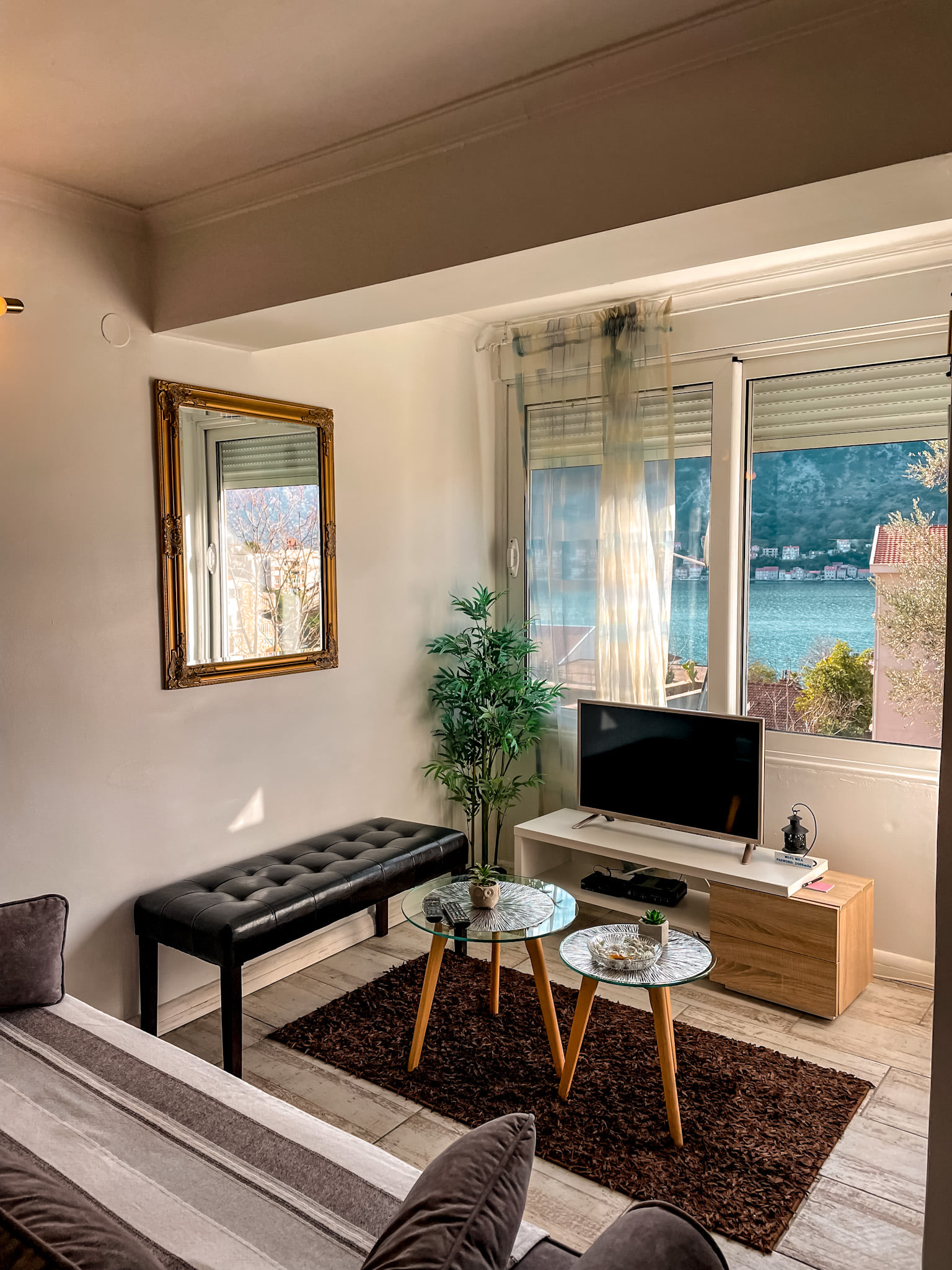
Where to Stay in Kotor
Most of Kotor is walkable depending on where you stay, but location really matters:
- Inside Old Town (Stari Grad):
- Best for: being in the heart of the action, short stays, romantic trips.
- Expect stone buildings, church bells, and some noise in peak season.
- Just outside the walls (Dobrota / Kotor waterfront):
- Best for: water views, quieter nights, families.
- Many apartments line the bay, with incredible views of the mountains and boats. Like us, you might wake up to mountains + water every morning.
- Further along the bay (Dobrota, Muo):
- Best for: budget stays and more space, still walkable or a short taxi ride to the Old Town.
If you’re traveling with kids or luggage, staying within a 10–15 minute walk of Kotor Old Town walls and the bus station keeps life easy.

Getting To & From Kotor
Kotor doesn’t have its own airport, but you’ve got a few easy gateways:
- Tivat (TIV): Closest airport, about 15–20 minutes by bus or taxi from Kotor.
- Podgorica (TGD): Montenegro’s capital; around 1.5–2 hours by bus or car.
- Dubrovnik, Croatia (DBV): Popular combo route; many people do Dubrovnik ↔ Kotor by bus or transfer in 2–3 hours.
The main bus station is about 5 minutes from Old Town walls, so pretty close to everything. You can purchase tickets there for your next destination.
We grabbed tickets for Dubrovnik which cost 20€ for adults and 11€ for kids. Our Airbnb host was amazing and asked his dad to do it for us so we just got the tickets when we were picked up. Your prices may be a bit different now, but it gives you a ballpark.
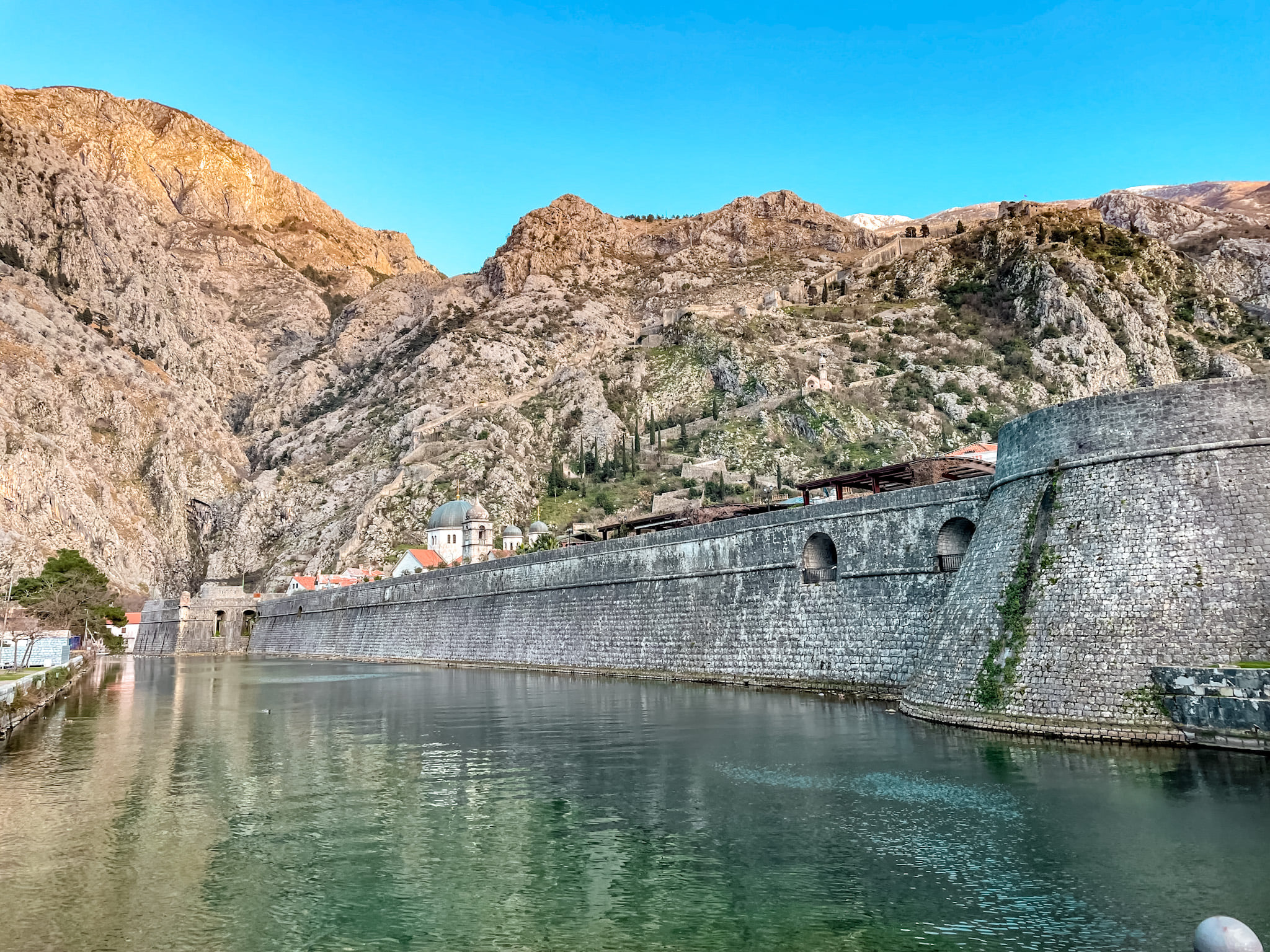
Getting Around Kotor
From our experience, Kotor is a walking city.
I am not sure how the bus systems operate but from our touring and walking, we didn’t see many buses during our stay. I would say it would be difficult to try and catch the bus but luckily depending on where you are staying everything is walkable. We never took a bus.
In reality, there are local and regional buses that run between Kotor and nearby towns like Perast, Budva, and Tivat, plus long-distance routes, but they don’t feel like a city “public transport” network, you mostly use them to hop between towns, not to get around inside Kotor.
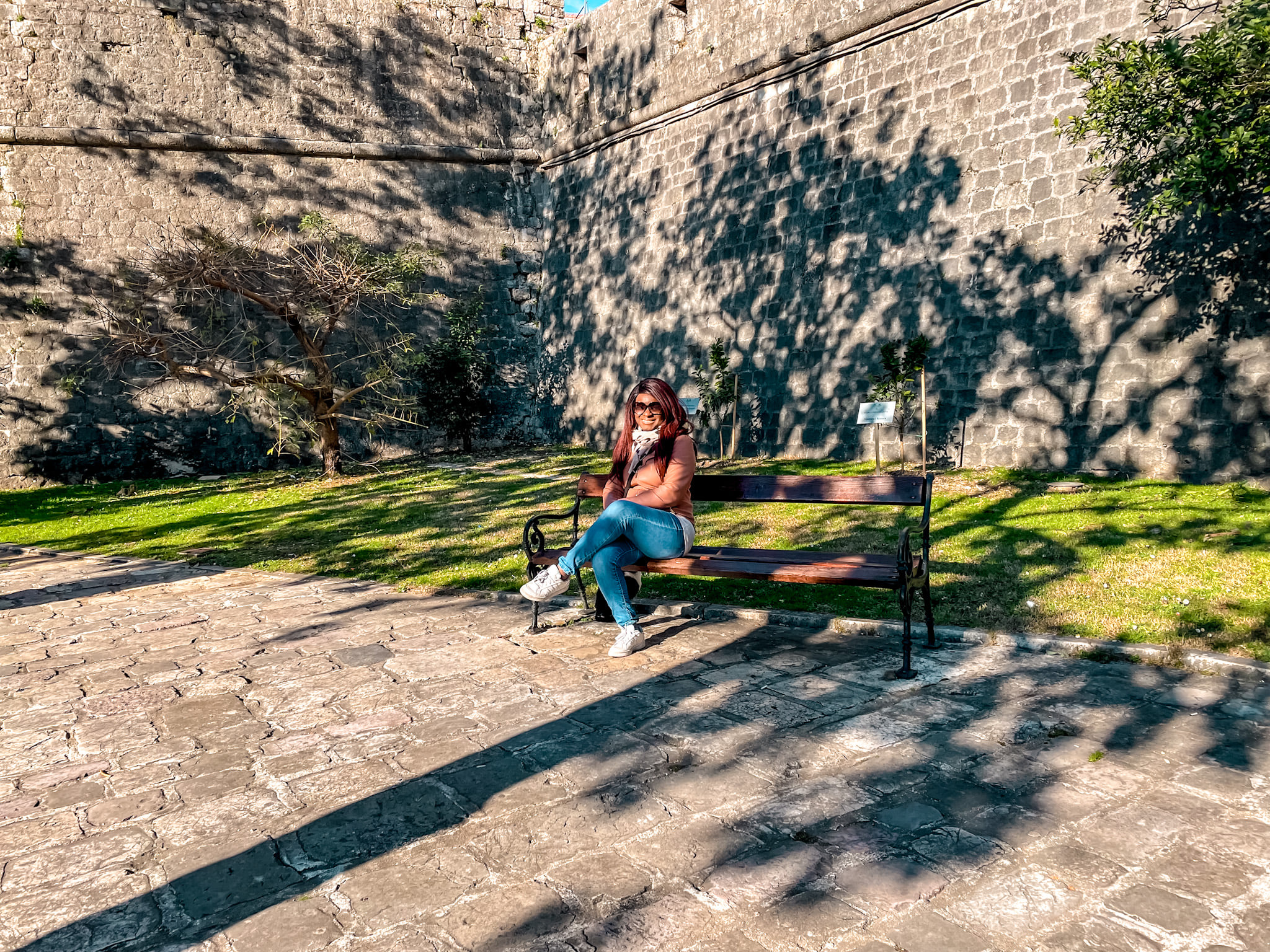
On the ground, you’ll mostly:
- Walk into and around Old Town
- Walk or taxi along the bay if your accommodation is a bit further
- Use buses or private transfers to get to other cities
Comfortable shoes are non-negotiable. Cobblestones + steps + inclines = your daily leg workout.
Things To Do in Kotor, Montenegro

1. Get Lost in Kotor Old Town
We visited the Old Town a few times. The winding cobblestone streets, archways, and stone buildings feel like a movie set.
The Old Town (Stari Grad) is a compact, walled medieval city, triangular in shape and tucked under the mountain. It’s considered one of the best-preserved medieval towns on the Adriatic, packed with Romanesque and Venetian architecture, little squares, and tiny side streets.

There is so much to do in Old Town:
- Browse small boutiques and souvenir shops
- Sit at a cafe and people-watch with a coffee or wine
- Duck into churches and little museums
- Watch the cats (Kotor is famous for its cat population)
The winding streets can have you lost in no time. My tip: let yourself get lost. It’s small enough that you’ll eventually spill back into a familiar square or the main gate.
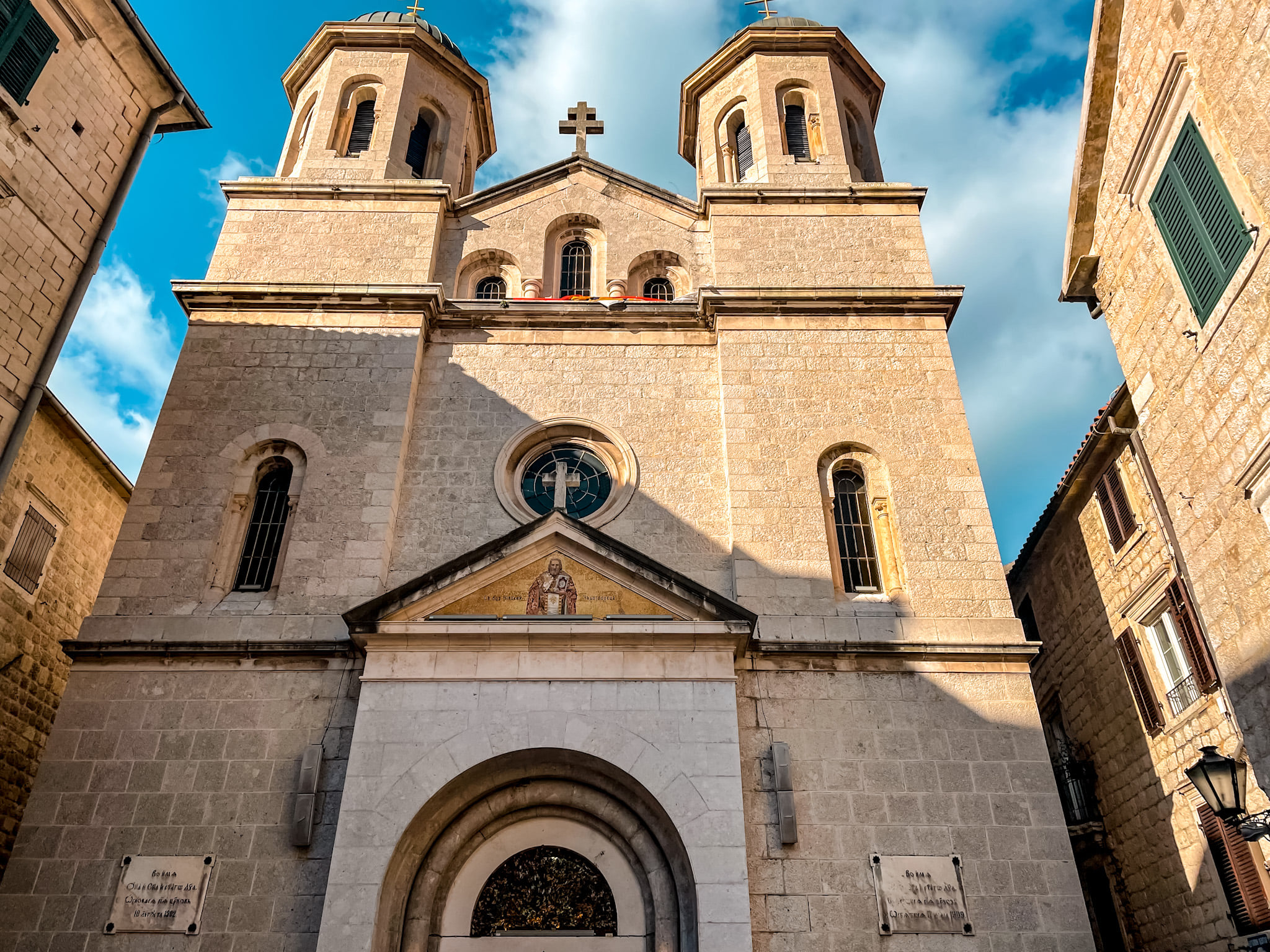
2. Visit the Churches & Saint Tryphon Cathedral
We walked through a few churches and, for some reason, churches are one of my favorite parts when visiting somewhere new. To see how the cathedrals and churches are decorated and displayed tells you so much about a place.
The cathedral with its uneven towers - Saint Tryphon Cathedral (Katedrala Svetog Trifuna) is one of only two Roman Catholic cathedrals in all of Montenegro. It’s considered by many to be Kotor’s most beautiful building and a symbol of the city.

St Tryphon was originally consecrated in 1166 and has been rebuilt and restored several times after earthquakes, which is why its twin towers don’t perfectly match. Inside, you’ll find Romanesque and Baroque elements, relics of St Tryphon, and intricate stonework.
Tips:
- Dress modestly (shoulders and knees covered) out of respect.
- Go earlier in the day when it’s quieter if you want time to sit and take it in.

3. Cat Museum & Kotor’s Cat Culture
The Cat Museum was closed when we visited, but if you like the four-legged felines this may be a nice stop for you. The museum presents a collection of cat-related memorabilia, ephemera & vintage artwork.
Kotor has become known for its cat population, locals and visitors feed and care for them, and you’ll see cats lounging in doorways, on steps, and in the sun. The Cat Museum is small and quirky; entry is usually just a couple of euros and often supports cat care.
Even if the museum is closed, the cats themselves are part of the experience.
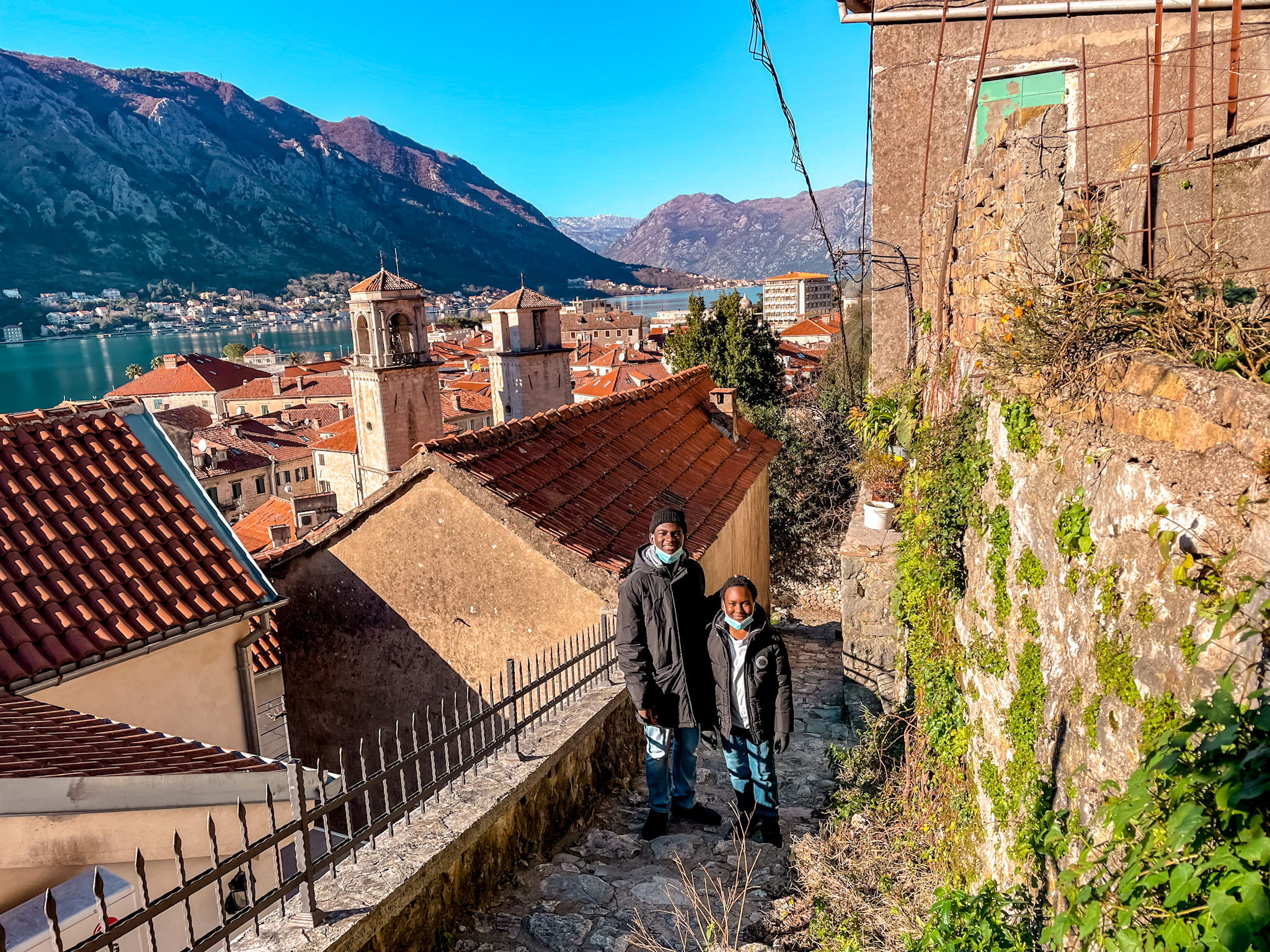
4. Climb the Old City Walls to the Church of Our Lady of Remedy
Climb the Old City. The 4.5 km long Kotor city walls surround the old town of Kotor, from sea level up to 250 m high to the fortress of San Giovanni (St John’s Fortress).
The hiking will first take you to the Church of Our Lady of Remedy and then to St John’s Fortress. We did only half the climb and stopped at the church. An old lady (me) and two kids (lazy) got as far as we could that day haha. But the views from there were nothing short of spectacular. The hike/climb was peaceful and relatively easy. Because we went during the winter months it was cold and almost empty. We saw four people on the climb.
If you go all the way to St John’s Fortress, be ready for around 1,300+ steps and a decent elevation gain, but the payoff is one of the best panoramas over the Bay of Kotor.
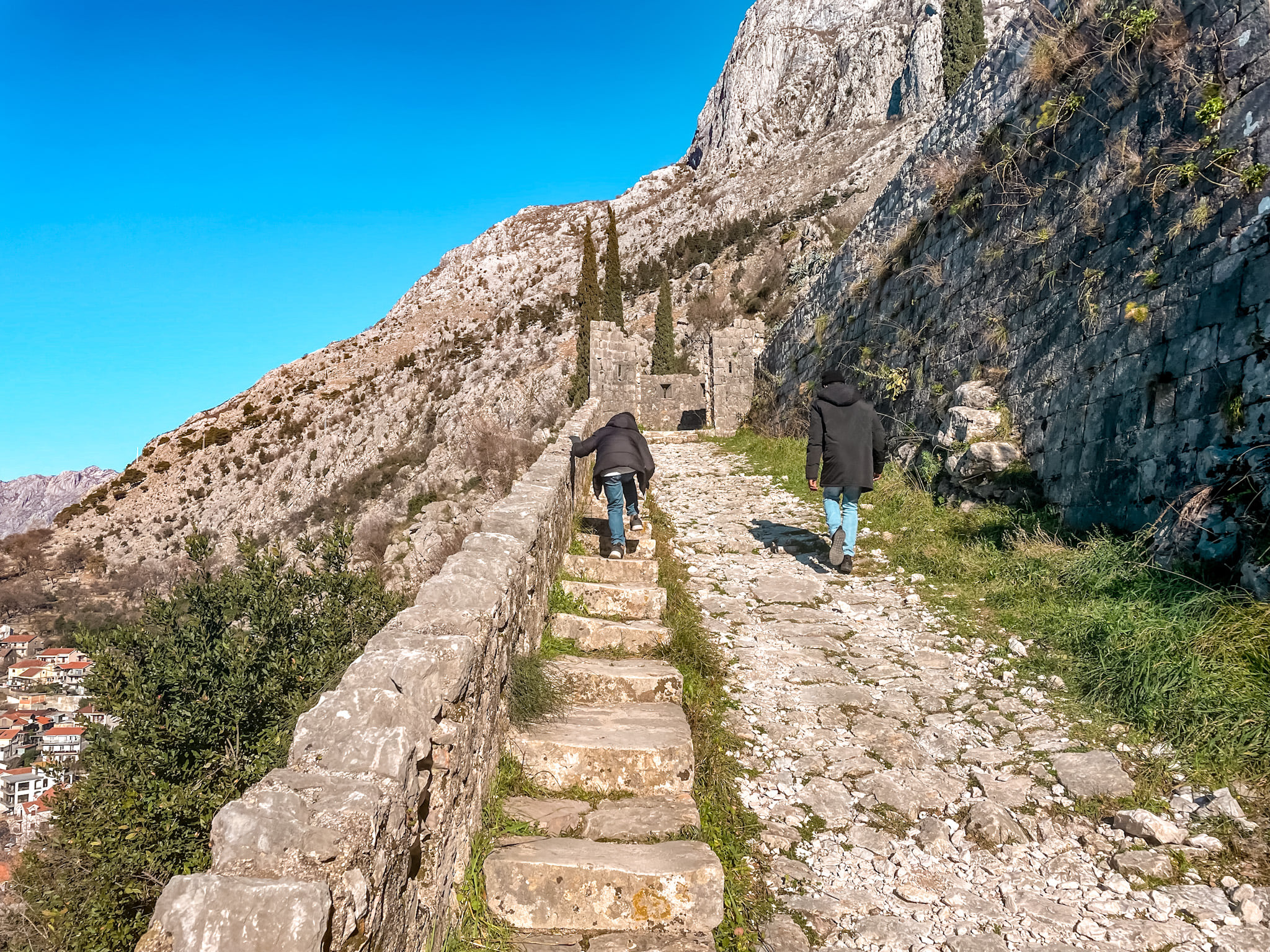
Hiking tips:
- Start early in summer to avoid heat and cruise-ship crowds.
- Wear proper shoes; the stones can be uneven and slippery.
- Bring water and a light snack.
- There’s usually a small entry fee to access the official path along the walls, carry cash.

5. Walk Along the Bay of Kotor
Walk along the Bay of Kotor. Sprawling yachts, boats, and water vessels line the bay. The view from here is spectacular.
You can follow the waterfront path for quite a while, with constant views of the red-roofed Old Town, mountains, and the curve of the bay. Sunset here is gorgeous, and you’ll find plenty of little cafes, gelato spots, and benches along the way.
For a different angle, you can take a boat tour around the bay, often including:
- Perast – A small, baroque town along the bay with elegant churches and waterfront promenades.
- Our Lady of the Rocks – A tiny artificial island with a church and museum, reachable by boat from Kotor or Perast.

6. Shopping Centre Kamelija (Especially in Winter)
Be sure to visit the Shopping Centre Kamelija. We went in just to get warm from the cold outside and found it amazing. From the outside, you couldn’t tell what you would find inside.
This is a quaint shopping center with fashion boutiques and a grocery store, plus a food court & kids’ playroom. We stopped at the food court to grab something sweet and light to eat while we rested and recharged.
If you’re visiting in winter or on a rainy day, Kamelija is a perfect “reset” stop - snacks, bathroom break, a supermarket run, and indoor warmth.

7. Day Trips From Kotor
If you have a few days, Kotor makes a great base for exploring the region:
- Perast & Our Lady of the Rocks: A must-do half-day trip by boat or local bus. Tiny, photogenic town + island church.
- Lovćen National Park & Kotor Cable Car: A newer cable car runs from near Kotor up towards Lovćen National Park, offering huge views over the bay; from there you can continue by car or tour to see the famous Njegoš Mausoleum at 1,660 m.
- Budva: Another historic coastal town with beaches and nightlife, about 30–40 minutes away by bus.
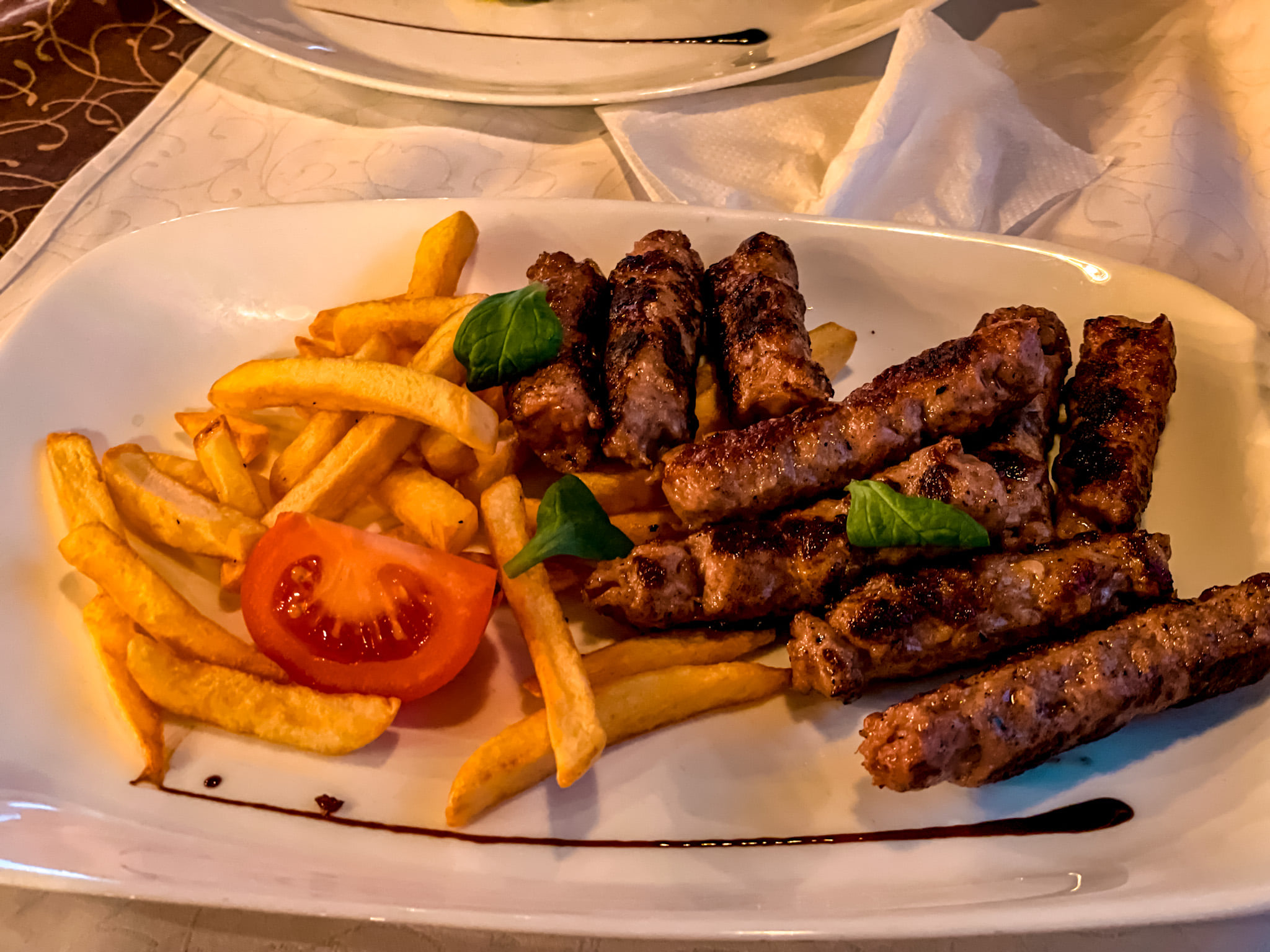
What to Eat in Kotor: Montenegrin Food & Bay Specialties
Bring your appetite - Montenegrin cuisine is hearty, flavorful, and deeply influenced by Mediterranean and Balkan traditions. The coastal area around Kotor leans heavily on fresh seafood, olive oil, wine, and Italian influences, while still offering classic Balkan comfort foods.
A few things to look for in Kotor’s restaurants and konobas (taverns):
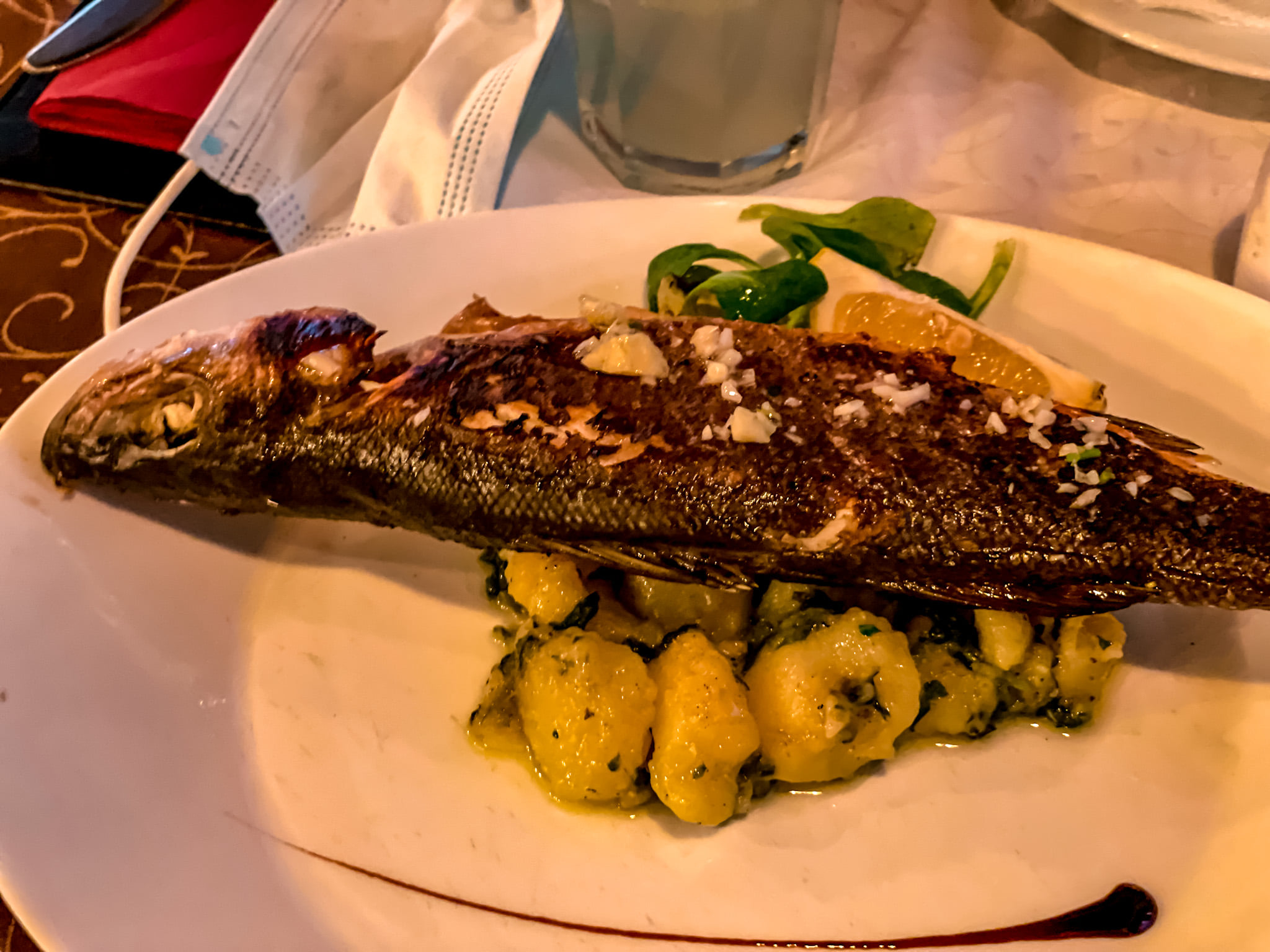
- Fresh seafood from the bay:
- Njeguški pršut & local cheese:
- Thinly sliced, air-dried ham from the village of Njeguši, often served with local cheeses and olives, simple and so good.

- Burek:
- Flaky filo pastry stuffed with meat, cheese, spinach, or potatoes—perfect for breakfast or a snack on the go.
- Ćevapi:
- Grilled, skinless sausages served with bread, onions, and sometimes ajvar (pepper dip). A classic Balkan fast food that’s cheap and filling.
- Kačamak:
- A traditional, comforting dish made from cornmeal with potatoes and cheese or kajmak, more common in mountain areas but you may find it in traditional restaurants.
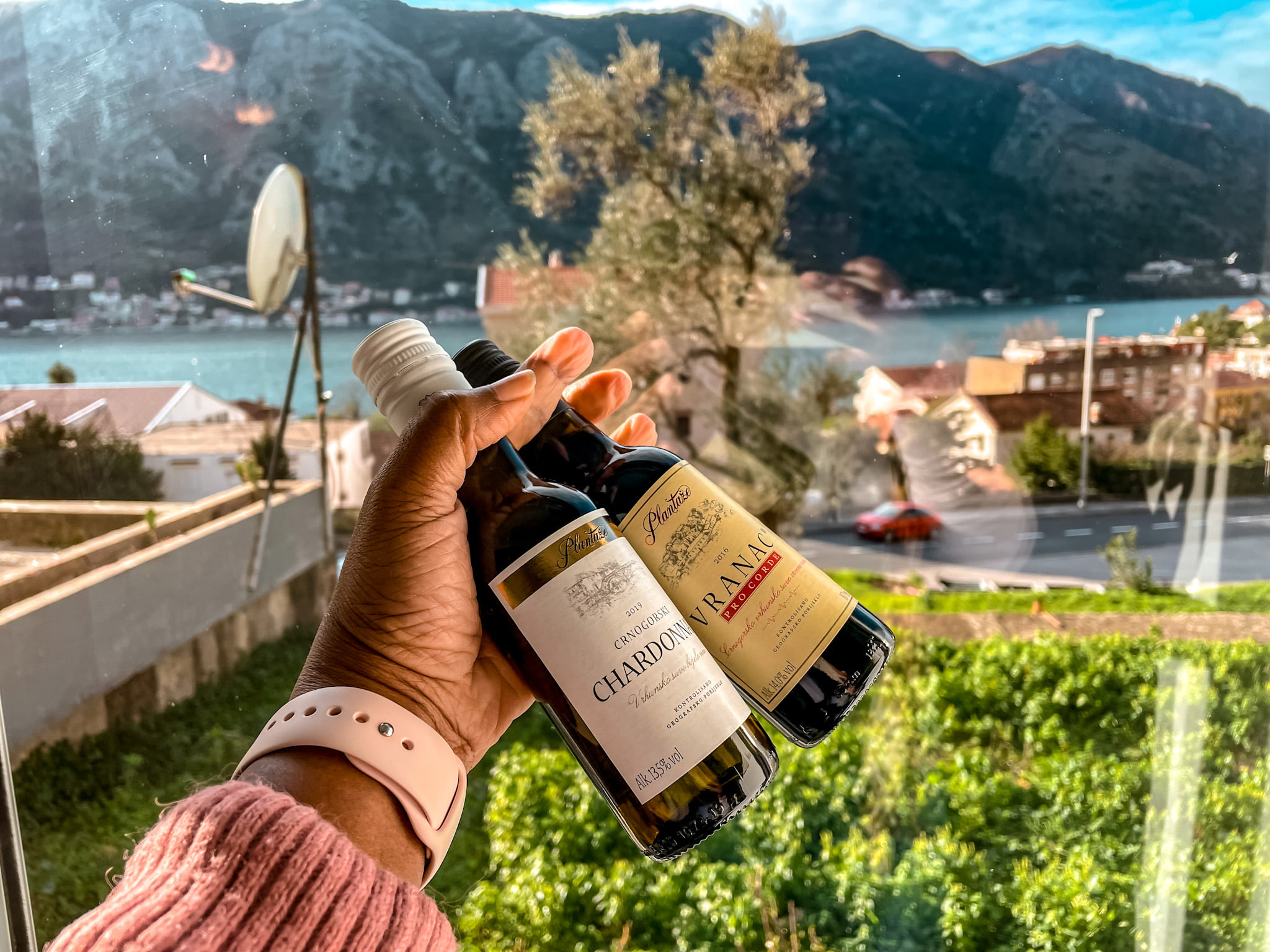
- Local wine & beer:
- Montenegrin wines (especially Vranac reds) and local beer are widely available and pair well with grilled meats and seafood.
If you’re traveling with kids or picky eaters, you’ll still find plenty of pizzas, pastas, burgers, and simple grilled chicken on menus - Kotor is used to hosting all kinds of travelers.

Money, Language & Practical Tips
- Currency: Montenegro uses the euro (€) as its de facto official currency, even though it’s not yet an EU or eurozone member.
- Cash vs. card: Bring cash. Most places only accept cash and swiping your card is not as easy as in other countries. We did struggle with this, but inside the walls of Old Town, we did find a few places that accepted credit cards and were able to grab dinner and even sweet treats.
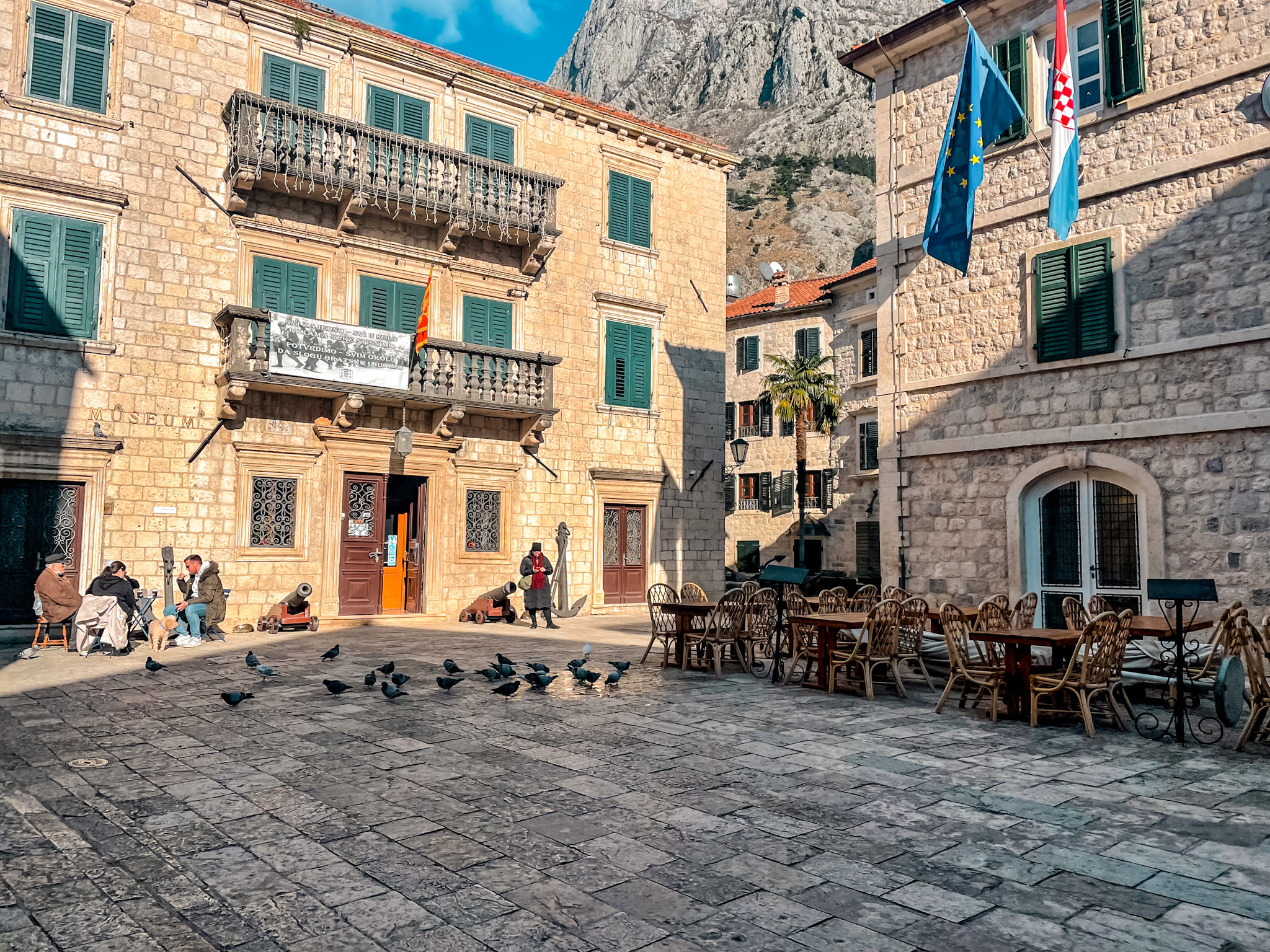
- ATMs: Look for bank-branded ATMs (avoid random standalone machines with bad exchange rates).
- Language: The official language is Montenegrin, but English is widely spoken in tourist areas, especially by younger people and hospitality staff.
- Safety: Kotor felt safe to walk around, even in the evening. As always, watch your bags in crowded Old Town areas and on busy days when cruise ships are in port.
- Connectivity: Many cafes and apartments have Wi-Fi. If you’re staying longer or need reliable data, consider grabbing a local SIM at the airport or in a bigger town.
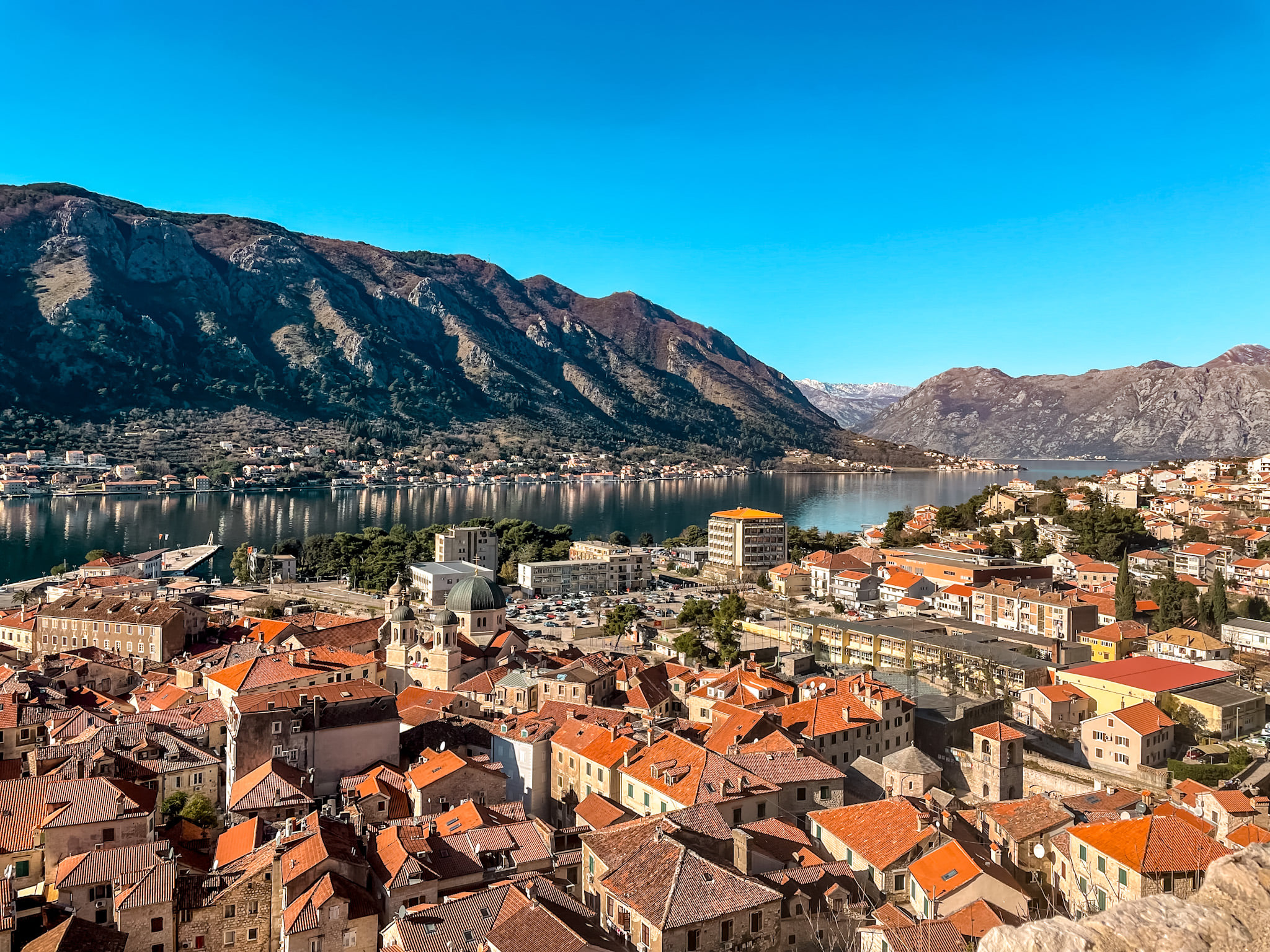
Final Thoughts: Why Kotor Is Worth Your Time
Kotor quietly became one of those places that stays with you.
The views in the harbor city are breathtaking. Our Airbnb faced the mountains and water and made for a stunning way to wake up every morning. We wandered medieval streets, ducked into stone churches, climbed halfway up the city walls with frozen fingers, and warmed up in a tiny mall we only went into to escape the cold, and somehow it all added up to one of our favorite stops in Europe.
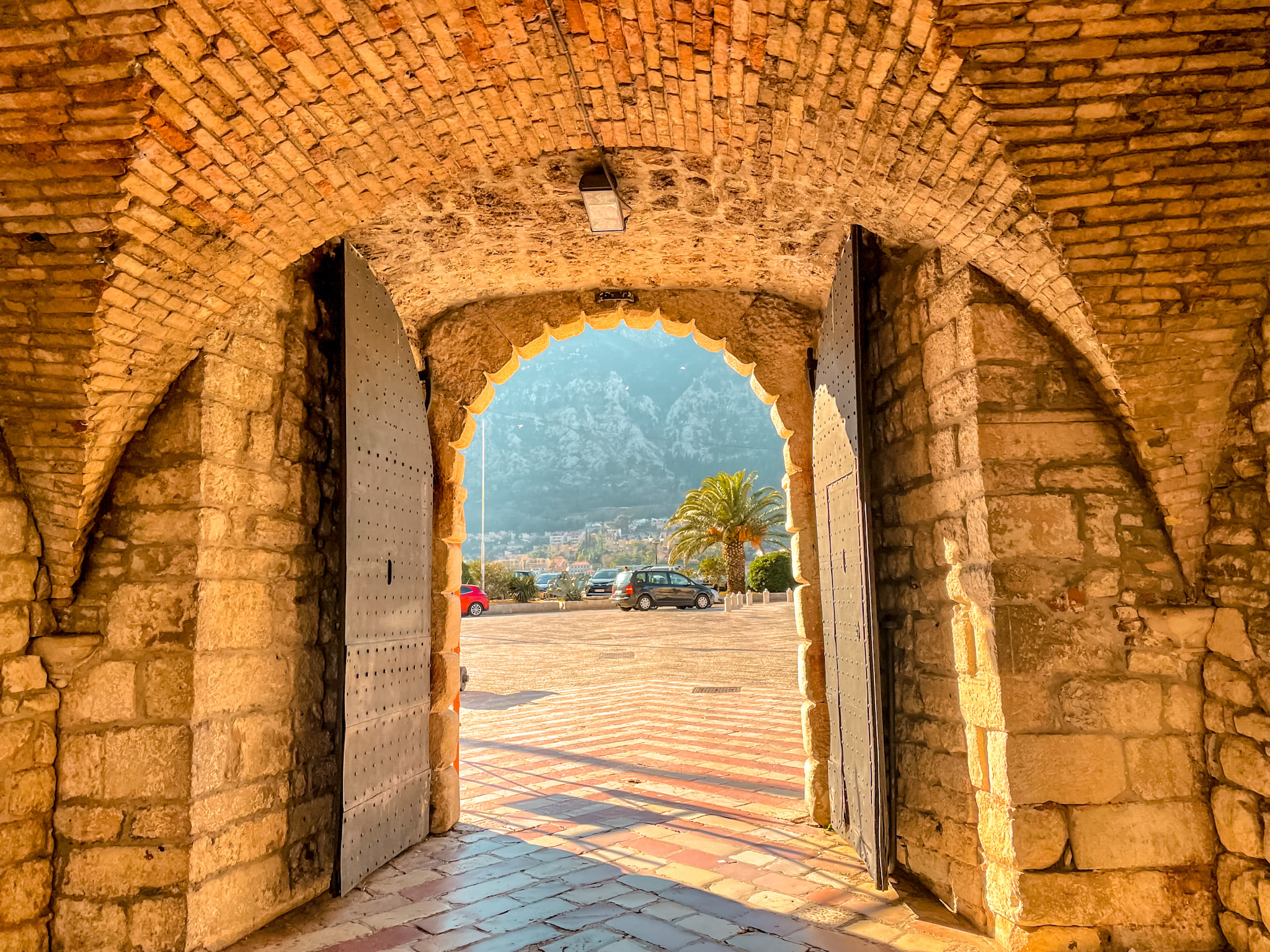
One of the most underrated cities in Europe, period.
If you’re planning a Balkans trip, a Croatia coast road trip, or just want somewhere that feels both dramatic and cozy at the same time, add Kotor, Montenegro to your list. Whether you come in the height of summer or in the quiet of winter like we did, you’re in for something special.
